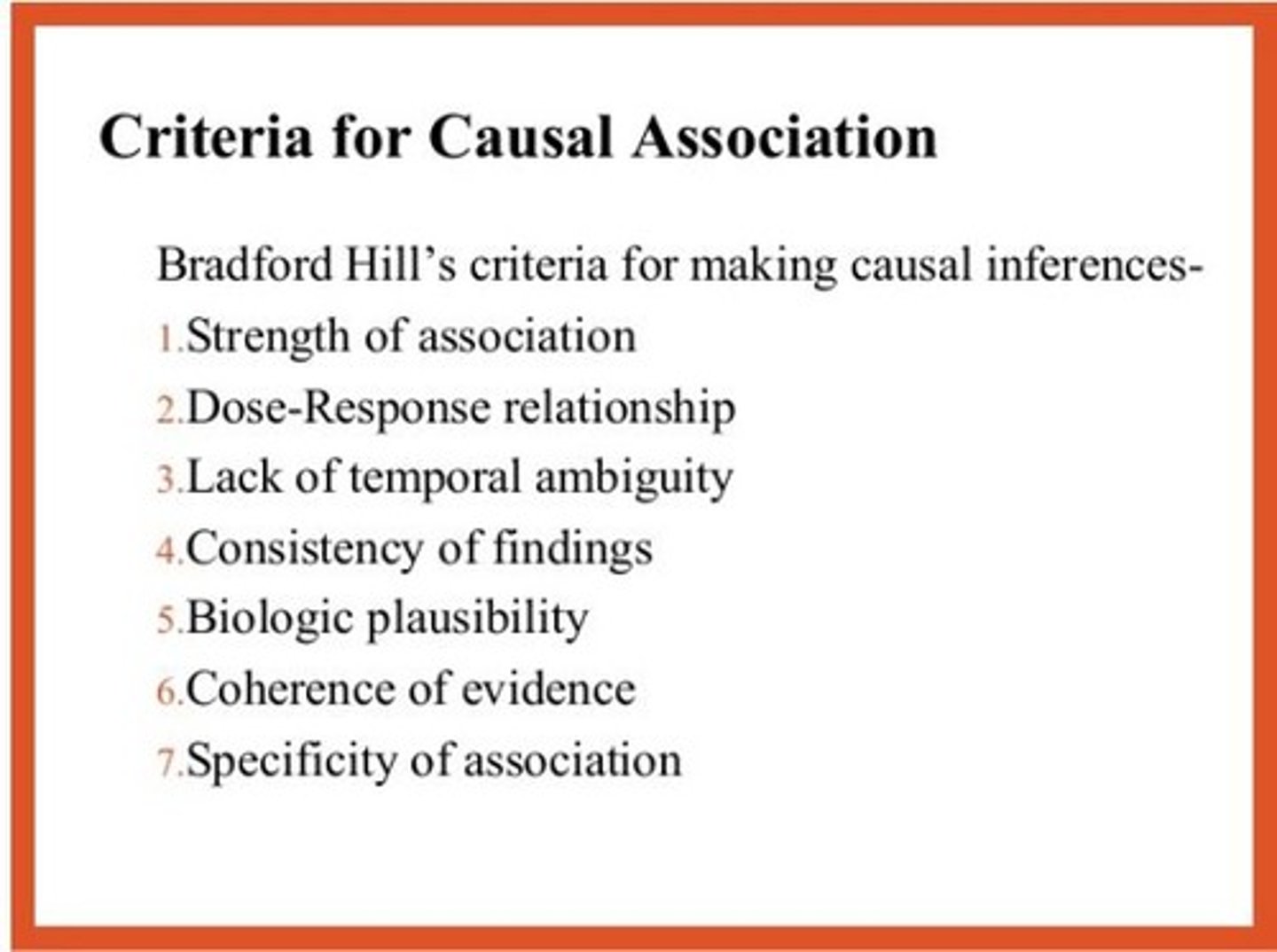Session 7: Causation
1/23
There's no tags or description
Looks like no tags are added yet.
Name | Mastery | Learn | Test | Matching | Spaced |
|---|
No study sessions yet.
24 Terms
Association
An observable relationship or connection between certain exposure and a certain disease or health event
E.g., many social factors are clearly associated with health outcomes
Chance (random variation)
p-value
95% CI
Bias
Any trend in the collection, analysis, interpretation, publication or review of data that can lead to conclusions that are systematically different from the truth.
It arises from any trend in the collection, analysis, interpretation, publication or review of data that can lead to conclusions that are systematically different from the truth.
Confounding factor
Factor that is independently associated with the exposure and the disease or outcome but is not on the causal pathway between exposure and outcome
Disease risks would be different even if the exposure were absent in both populations

Reverse causality
When a cause-effect relationship exists in the opposite direction
Outcome causes exposure
Causation
A factor that plays about a role in bringing about a disease
A causal factor must be NECESSARY, SUFFICIENT - both of these or neither at all.
Necessary = a cause is termed necessary when it ALWAYS precedes a disease
Sufficient = a cause is termed sufficient when it can cause the disease ON ITS OWN
Bradford Hill's Criteria for Causation (1965)

Bradford Hill's Criteria for Causation (1965)
1) Strength of Association
A strong association is more likely to be causal because strong associations are less likely to be explained by confounding/bias
Defined by the size of risk, as measured by appropriate statistical tests (RR, OR etc.)

Bradford Hill's Criteria for Causation (1965)
2) Dose-Response Relationship
An association in which varying amounts of exposure to the factor leads to varying strengths of association with outcome of interest – is more likely to be causal

Bradford Hill's Criteria for Causation (1965)
3) Lack of Temporal Ambiguity
An association in which the putative factor has been demonstrated to precede the outcome of interest – is more likely to be causal
Exposure always precedes outcome

Bradford Hill's Criteria for Causation (1965)
4) Consistency of Findings
An association that has been demonstrated by different studies on different groups of people in different places at different times – is more likely to be causal

Bradford Hill's Criteria for Causation (1965)
5) Biological Plausability
An association for which there is a biologically plausible mechanism – is more likely to be causal
The association should be compatible with existing theory/knowledge

Bradford Hill's Criteria for Causation (1965)
Coherence of Evidence
An association that conforms with current knowledge and theory is more likely to be causal

Bradford Hill's Criteria for Causation (1965)
Specificity of Association
An association that is specific to the exposure-outcome association under investigation is more likely to be causal
Single putative cause produces a specific effect

When planning or implementing research, what phenomena should you be aware of which may give rise to apparent associations?
- Bias
- Chance
- Confounding
Three main types of bias - what are they?
1) Information bias
2) Selection bias
3) Confounding bias
Information bias
Measurement error of exposure or disease
Selection bias
Does the selection of the control/reference group depend on the outcome and the exposure of interest?
Confounding bias
Lack of comparability (lack of exchangeability) between exposed and non-exposed populations
Two types of error
Random and differential (systematic error)
Differential (systematic) error
Use of an invalid measure that misclassifies cases in one direction and misclassifies controls in another
Random error
Use of invalid outcome measure that equally misclassifies cases and controls
CHANCE and its relation to error
Chance is caused by RANDOM error
Chance leads to IMPRECISE results
Error from chance will be cancelled out by e.g., large sample size

BIAS and its relation to error
Bias is caused by SYSTEMATIC error
Bias leads to INACCURATE results
Error from bias will NOT cancel eachother out - whatever the sample size might be
